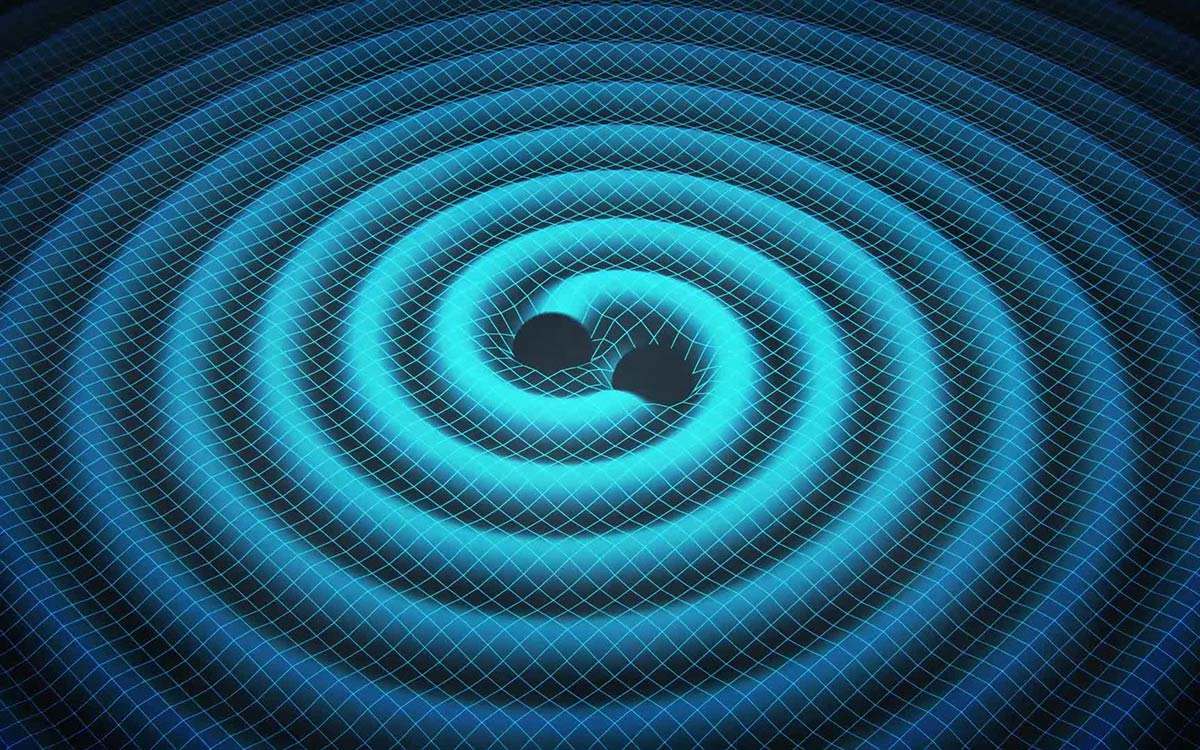(单词翻译:单击)
听力文本
This is Scientific American — 60-Second Science. I'm Steve Mirsky.
Got a minute?
In 2016 the Laser Interferometer Gravitational-Wave Observatory, LIGO, made the first accepted detection of gravitational waves.
"So any time you move a mass it produces a gravitational wave...so black holes, like the ones LIGO detected, these are stellar mass black holes, about 10 times the mass of the sun. When they're in orbit they're accelerating constantly, so constantly producing gravitational waves."
Sarah Burke Spolaor, of the National Radio Astronomy Observatory in New Mexico, at the annual meeting of the American Association for the Advancement of Science in Boston on February 18th.
For gravitational waves produced by the acceleration of even bigger masses, we're going to need what's called the Laser Interferometer Space Antenna, or LISA.
"Now if you think of much bigger masses, something like a million times the mass of the sun, these things are moving much more slowly, much more far apart, and they're producing lower frequency gravitational waves. And this is what LISA can detect. So LIGO, which is operating at these very fast orbits, fast frequencies, is unable to detect these things that are moving much more slowly and are on a much bigger scale."
And for even bigger masses, you get to what Burke Spolaor is working on: Pulsar Timing Arrays.

"What we do with this technique is use radio telescopes to observe pulsars, which are neutron stars that are rotating very rapidly and sending their beams of emission across Earth, several hundred times per second...and the idea is of course if a gravitational wave is passing through Earth, the gravitational wave is stretching and squeezing our space time. And the tick that we see from these very, very regularly spinning pulsars is speeding up and slowing down."
"Just like we can scale the stellar mass black holes that LIGO can detect, to very, very intermediate mass very large black holes that LISA can detect, Pulsar Timing Arrays will probe the very massive end of this distribution and the most massive, so the billion to even 10 billion solar mass binary black holes in the universe. So every time you get a galaxy merger you can get a binary supermassive black hole, which then will contribute signal to our Pulsar Timing Arrays by propagating through the galaxy."
"Of course, gravitational waves does not stop at detection. What we really want to do is astrophysics with gravitational waves. And use it as a new tool to observe the universe and understand our place in it."
Thanks for listening for Scientific American — 60-Second Science Science. I'm Steve Mirsky.
参考译文
这里是科学美国人——60秒科学。我是史蒂夫·米尔斯基。
有一分钟时间吗?
2016年,激光干涉引力波天文台(LIGO)首次探测到了得到认可的引力波。
“无论何时,质量只要被移动就会产生引力波,就像LIGO探测到的那些恒星质量黑洞,其质量约为太阳的10倍。这些黑洞进入轨道以后就会不断加速,继而持续产生引力波。”
萨拉·伯克·斯伯劳尔来自位于墨西哥州的美国国家射电天文台,她在2月18日美国波士顿科技协会的年度会议上发表了讲话。
为了探测更大质量加速移动所产生的引力波,我们需要“激光干涉仪空间天线”(LISA)。
“现在,想象质量更大的物体,比如比太阳的质量大一百万倍的物体,它们移动更慢、位置更远,产生引力波的频率更低。这是LISA可以检测到的引力波。而LOGO能检测到运行轨道快、频率高的引力波,但是无法检测到移速慢、规模大的物质产生的引力波。”
如果质量更大,要想探测引力波,你可以用伯克·斯伯劳尔正在研究的脉冲星计时阵列。
“借助这种技术,我们用射电望远镜观测脉冲星,脉冲星属于中子星,它们的旋转速度非常快,以每秒发射数百次的频率向外发射辐射波束,这些波束可以穿越地球。当然,想法是,如果引力波正在穿越地球,那引力波就在拉伸并挤压我们的时空。而从有规律旋转的脉冲星来看,时钟滴答的走时则在加速或减速。”
“就像我们可以衡量LIGO检测到的恒星质量黑洞以及LISA检测到的非常大的中等质量黑洞,脉冲星定时阵列可以探测这种分布的庞大末端和最大的黑洞,这些黑洞相当于二进制太阳质量的10亿至100亿倍。所以,每次星系合并都会产生二进制特大黑洞,这种黑洞传播的信号会穿越星系,被脉冲星计时阵列接收到。”
“当然,引力波的研究不会停止在检测上。我们真正想做的是用引力波研究天体物理学。将引力波当作观察宇宙和理解地球位置的新工具。”
谢谢大家收听科学美国人——60秒科学。我是史蒂夫·米尔斯基。
译文为可可英语翻译,未经授权请勿转载!
重点讲解
重点讲解:
1. be unable to do sth. 不能…的;无法…的;
例句:The jury are unable to reach a unanimous decision.
陪审团未能达成意见一致的裁决。
2. work on 研究;对…作调查;
例句:They began to work on the new design.
他们开始研究新的设计。
3. speed up 加快(…的)速度;
例句:The car sped up and overtook the truck.
那辆小车突然加速,超过了卡车。
4. slow down (使)放慢;(使)减速;
例句:Now just slow down a bit.This is too fast!
稍微慢一点。速度太快了!


